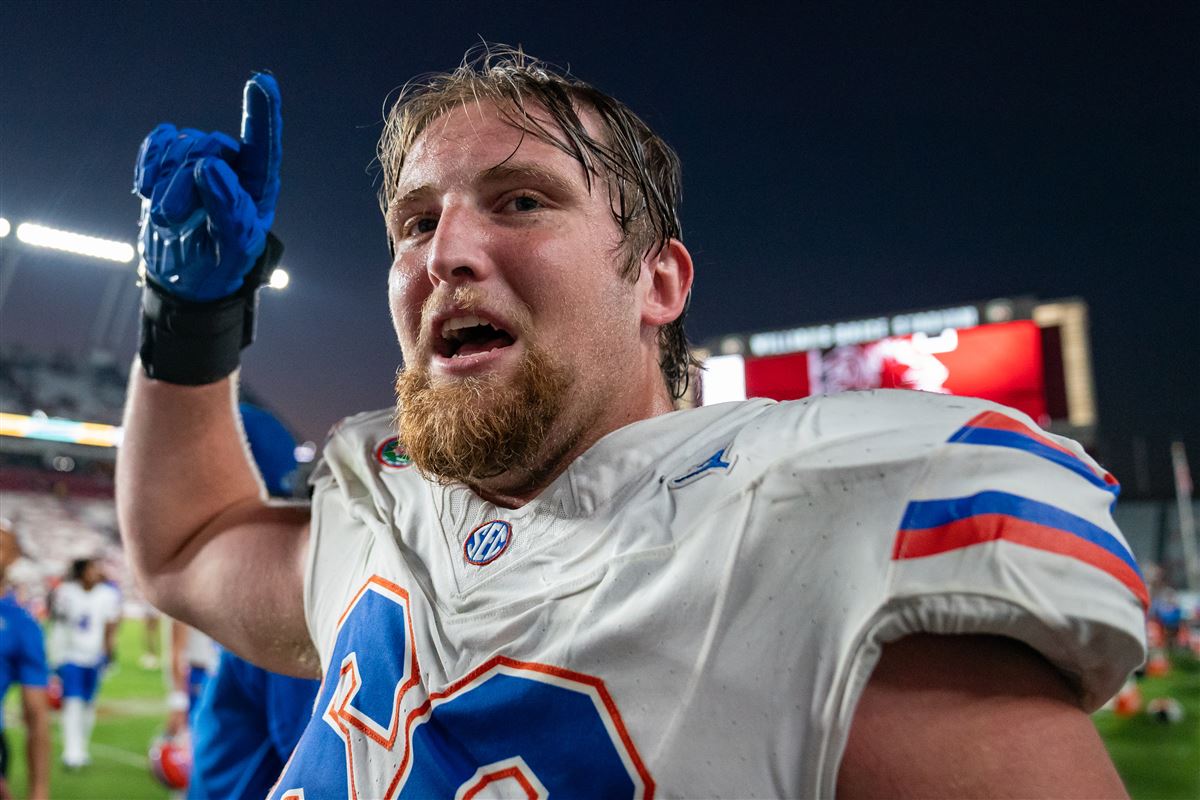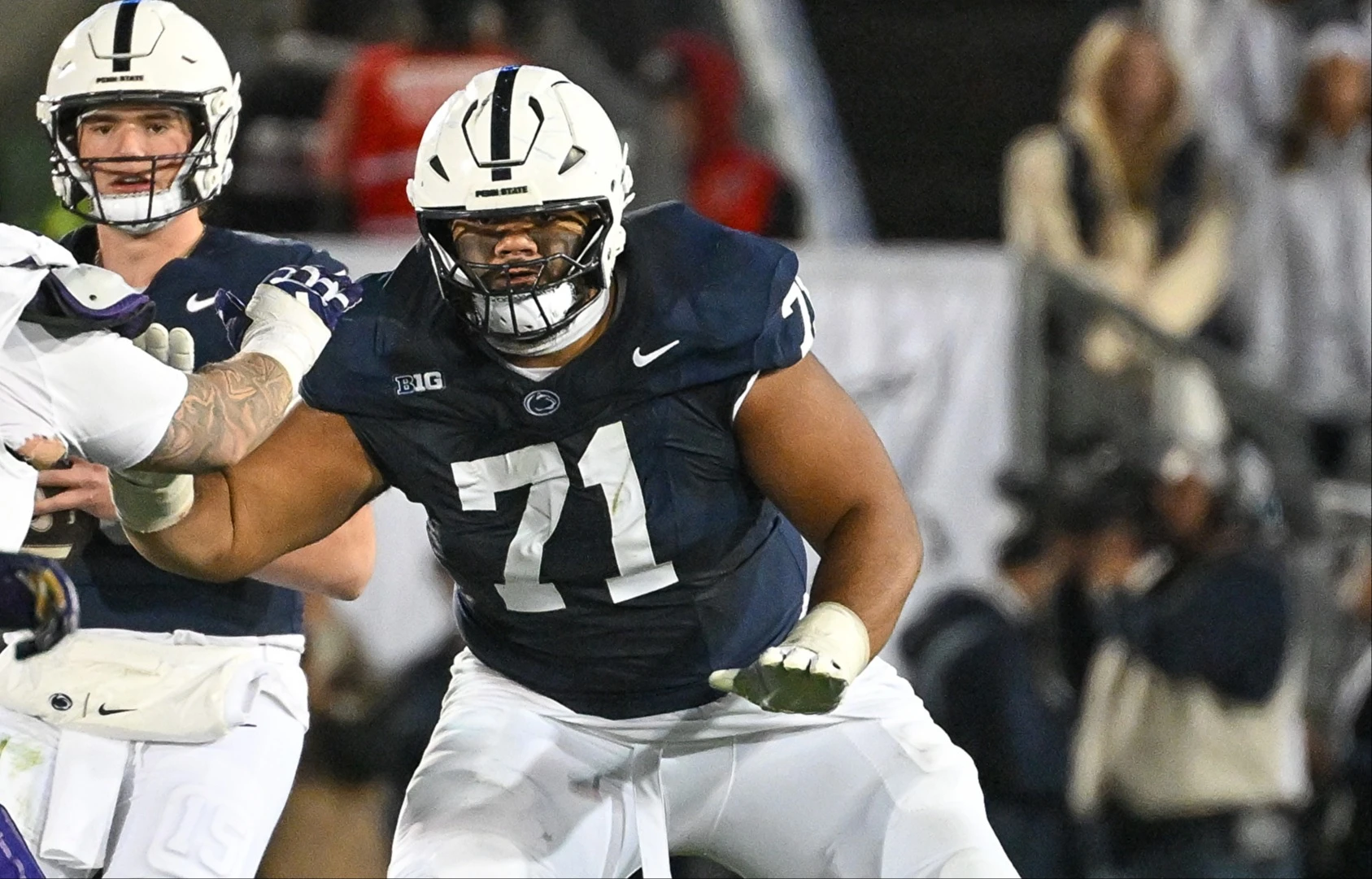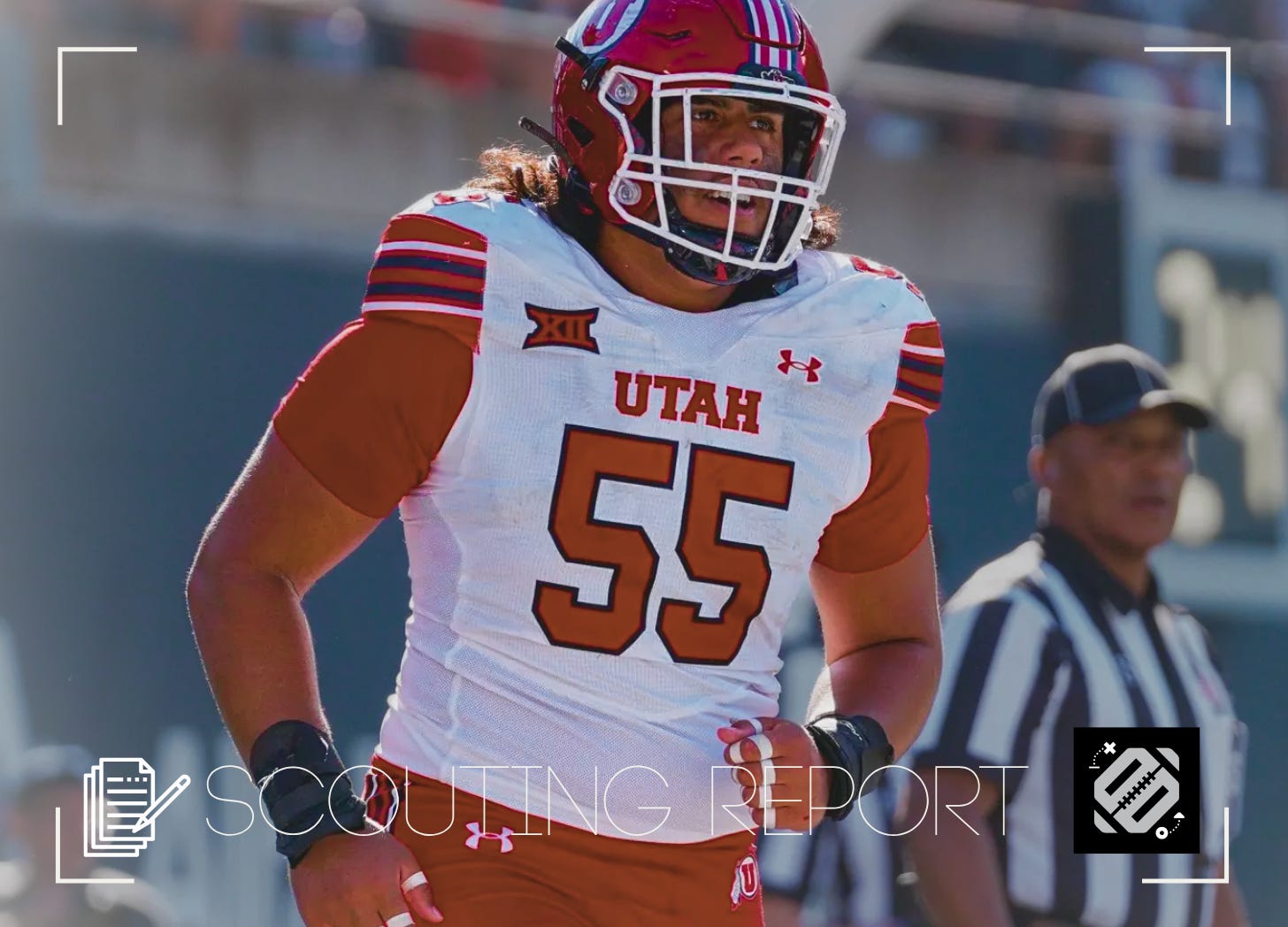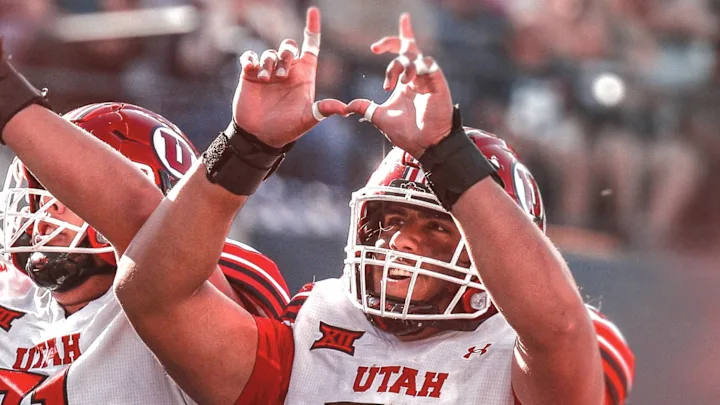By Charlie Campbell.
Send Charlie an e-mail here: [email protected]
Follow Charlie on Twitter @draftcampbell for updates.
This page was last updated April 3, 2020. Follow me @walterfootball for updates.
Running Back Class
Early-round talent: B
Mid-round: A-
Late-round: B+
Overall grade: B+
2020 prospects vs 2019
D’Andre Swift
Josh Jacobs
Jonathan Taylor
Clyde Edwards-Helaire
Cam Akers
Miles Sanders
J.K. Dobbins
Zack Moss
Darrell Henderson
David Montgomery
Devin Singletary
Damien Harris
A.J. Dillon
Alexander Mattison
Lamical Perine
Bryce Love
The 2017 class of running backs was one of the best running back classes in years. The 2018 class was strong as well, so it wasn’t surprising that there was a dropoff in 2019 after the college ranks were depleted with players leaving early. Now in 2020, we are back to a strong class.
There could be as little as one running back takend in the first round of the 2020 NFL Draft, but there could also be as many as three. D’Andre Swift is a slightly better prospect than Josh Jacobs. Jonathan Taylor is not far behind Jacobs. Taylor, Clyde Edwards-Helaire and Cam Akers are all better prospects than Miles Sanders. J.K. Dobbins and Zack Moss are better than the third-round running backs of last year. Moss may slide because of medical concerns, but he is a better player than Darrell Henderson, David Montgomery, Devin Singletary or Damien Harris. A.J. Dillon is on a par with Alexander Mattison, and Lamical Perine is on a par with Bryce Love.
Safest Pick: D’Andre Swift, Georgia

Previous Picks:
2019: Josh Jacobs
2018: Saquon Barkley
2017: Leonard Fournette
2016: Ezekiel Elliott
2015: Melvin Gordon
2014: Carlos Hyde
2013: Eddie Lacy
I’m writing the same sentence I wrote the past three years, but this time, I’m just subbing in Jacobs for Barkley, who was subbed in for Fournette, “Last year, Barkley was an easy choice and he had an excellent rookie year.” Obviously, those three are off to good starts in their careers minus some injuries. Elliott was another no-brainer pick. Four years ago, I said Gurley would be the safest pick if it weren’t for his torn ACL. Gordon has turned into a good back and keeps getting better each season. Hyde has flashed at times, but has not been as good as expected, while Lacy had some good years for the Packers before weight issues ruined his career.
This was an easy choice with Swift, who is a natural runner with speed, strength, elusiveness and receiving ability. Over the past three seasons, Swift ran well for Georgia, showing his speed, vision, cutting ability and versatility. He looks like a future three-down starter with Pro Bowl potential. Some team sources think Swift could be used like Alvin Kamara in the NFL. In the 2020 NFL Draft, I think he is the safest running back prospect to turn into a good pro.
Biggest Bust Potential: A.J. Dillon, Boston College

Previous Picks:
2019: David Montgomery
2018: Rashaad Penny
2017: Wayne Gallman
2016: Kenneth Dixon
2015: Mike Davis
2014: Lache Seastrunk
2013: Montee Ball
Montgomery flashed some good and bad as a rookie, but it is far to early to pass any judgements on him. Penny has been a backup thus far, and Gallman likewise is stuck as a backup. Dixon has yet to break out. Otherwise, this bust list is looking pretty accurate. Davis has been a backup journeyman. Seastrunk never made it in the NFL, although he fell deep in the draft. Ball was a huge bust for the Broncos that I could see that one coming.
This was a tough choice because no player is really jumping out at me. I chose Dillon because he does not have special speed and while he is a big back he is not the bruiser that his size would suggest. I could see him struggling to become a starter and end up topping out as a rotational backup running back.
Running Back Rankings by Attributes
Natural Running Ability:
NFL prototype: Adrian Peterson, Redskins
- D’Andre Swift
- Jonathan Taylor
- Clyde Edwards-Helaire
- Cam Akers
- J.K. Dobbins
- Zack Moss
- A.J. Dillon
- Lamical Perine
Recap: There are still a number of coaches in the NFL who want an old-school approach of a running-based offense. Additionally, a lot of passing-led offenses want a back who can wear down defenses in the second half. All of these 2020 backs are quality runners.
Swift has excellent vision, patience, and body lean, plus behind his pads. He sets up blocks and uses his speed to dart through holes before they close. Defenders really struggle to get a hold of Swift, who has great feet that make him very elusive. He is sudden with his ability to cut and change direction. Swift has a devastating jab step with cuts back to the inside, and he routinely uses it to make tacklers grab air. His abrupt juke even works on defensive backs. With his change-of-direction skills and quick feet, Swift can create big runs on his own even when blocking assignments are missed. Swift is a devastating runner who can overwhelm defenses.
Taylor shows an excellent combination of size and speed that lets him run over tacklers or by them. He has a strong build and is very difficult to tackle as he will power through tackles and bounce off defenders to continue to gain yards. Taylor displays superb contact balance and runs behind his pads with good knee bend. In short yardage, Taylor is an asset as he can create on his own with the power to push the pile. He keeps his legs going after contact with a powerful lower body that is tough to stop. An added element to his power is a wicked stiff-arm that makes it tough for defenders to grab him.
On top of his superb feet, Edwards-Helaire has some elusiveness in the open field as he can cut to weave his way around defenders and also employs a deadly jump cut. Edwards-Helaire has great vision and is tough to get a hold of for defenders.
Akers is a natural runner with excellent moves and cutting ability to dodge tacklers. He has good feet, knee bend, an ability to run behind his pads and a burst to break off long runs.
Dobbins is a natural runner with instincts. He has excellent vision and anticipation to follow his line before bursting downhill as he quickly anticipates where a hole is about to open. On top of his feel for running with the ball, he has a compact build that provides him with some power to run through tackles and pick up yards after contact. Dobbins has plus balance to maintain his feet after getting hit by defenders, and he uses his stature to run through would be tacklers. In the open field, Dobbins has some moves, quick feet, and elusiveness. His strength and build make him a quality short-yardage runner as well.
Moss is a hard-nosed runner who runs angry and often brings pain to defenders who try to tackle him. Coming downhill, Moss shows serious aggression to run through defenders and power through them to continue to add yards. He has the lower body strength to move the pile and keeps his legs moving after contact. While he ran slow times at the combine, he plays with an element of speed, showing a burst to hit the hole before it closes and acceleration to the second level. In the open field, Moss has a second gear and does a better job of running away from the defense than one would expect. Moss displays some moves in the open field to dodge tacklers, and while he is not super elusive, he is not completely straight line. On top of his strength and quickness, Moss has other good traits like very good contact balance, vision, patience and instincts.
Dillon is a big-bodied back who is a one-cut downhill runner. He is faster than expected for a big back, possessing a burst to accelerate to the second level and get into the secondary. Dillon has the upper body strength to fight off tacklers and pick up yards after contact, but he is not the overpowering bruiser that one would expect for such a large back. Still, his big body and upper body strength should allow him to contribute in short-yardage and goal-line situations.
Perine is a tough runner whp can be a one-cut downhill runner, and also has the vision to create for himself at times. However, he does not have a special dimension of overwhelming size or speed. Thus, he’s rated behind the rest of the group.
Pass Receiving:
NFL prototype: Christian McCaffrey, Panthers
- Clyde Edwards-Helaire
- D’Andre Swift
- Cam Akers
- J.K. Dobbins
- Lamical Perine
- Zack Moss
- Jonathan Taylor
- A.J. Dillon
Recap: The passing-driven NFL has many offensive coordinators emphasizing running backs’ ability to help the aerial offense over their running ability. Coaches want backs who have good hands, run good routes and can rack up yards as outlet receivers. This group is very good overall, as the majority are good receivers out of the backfield. Although none of them is a Christian McCaffrey type who could legitimately line up as a slot receiver like McCaffrey can.
Edwards-Helaire is a dynamic weapon for the passing game, and his 55 receptions last year offer plenty of proof. He is an excellent route-runner out of the backfield, and his shiftiness is very difficult to defend in the open field. His cutting ability and sudden bursts create separation from linebackers along with gaining yards after the catch. Edwards-Helaire is very dangerous in space once he gets the ball in his hands, as he weaves through defenders with his elusiveness. As a pro, he should be a real weapon for the passing game on wheel routes, screens, and check downs.
Swift is well-suited for the passing-driven NFL as he is a talented receiving back. He runs good routes out of the backfield and has soft hands. Over the past two seasons, Swift made 56 catches and was a steady and reliable check-down option who was dangerous as a receiver. Swift is too fast and shifty for linebackers in man coverage, so he will give his NFL team a mismatch weapon who will be valuable on third downs.
In the passing game, Akers is a weapon as a check-down receiver. He has soft hands and finds the soft spots to get open for his quarterback. Akers is too quick, sudden and explosive for linebackers to cover, so he should be a real mismatch weapon.
One trait that really will get evaluators excited is Dobbins’ ability as a receiver. He is very dangerous at running wheel routes as he is fluid in space and has shown tremendous hands to make some difficult catches downfield. He makes some pretty hands catches with good technique not to use his body. Dobbins is a dangerous route-runner out of the backfield who provides mismatches in coverage against front seven defenders. He is an excellent fit to contribute to the aerial offense of the modern NFL.
Perine was a superb receiver for Florida in 2019 and provided some huge clutch plays in the passing game for the Gators. His production of 40 receptions for 262 yards and five scores was legit. He runs excellent routes of the backfield with very good hands and is natural as a receiver. If he were faster, he would be rated second only to Edwards-Helaire.
In the passing game, Moss is a nice back to catch passes in the flat. He is smooth in space and has soft, reliable hands. Moss could be a solid contributor as a receiver in the NFL.
Taylor has pretty good hands for a power back. He makes some difficult catches and is dangerous in space. In the passing game, Dillon can do more than was seen at Boston College, but he is not a real weapon for catching passses in the NFL. He could contribute on check downs and running down hill after making the catch. Dillon also has the potential to be a potent back on screens.
Pass Blocking:
NFL prototype: Ezekiel Elliott, Cowboys
- Lamical Perine
- Jonathan Taylor
- Zack Moss
- A.J. Dillon
- J.K. Dobbins
- Cam Akers
- D’Andre Swift
- Clyde Edwards-Helaire
Recap: This is huge for offensive coordinators. If a running back can’t pass protect, he is going to have a hard time seeing the field in the NFL. If the defenses know that a running back isn’t trusted to protect the quarterback, it is an immediate tip about what the play is going to be. Coaches want multiple backs with pass-protection skills. The importance of blitz pickup and pass blocking is increasing every year for running backs. The college game has caught on to this, and the 2020 group of running backs is pretty well prepared.
None of these backs are as good as Ezekiel Elliott was entering the NFL, but a lot of them have potential. Perine is a tough blocker who will take on blitzers and is smart at identifying the correct player to block. Once he gets some development with learning NFL blitz schemes, he could be a real asset in the passing game as a reliable quarterback protector
In blitz protection, Taylor is a very good blocker and doesn’t shy away from contact. Moss has the frame to take on rushers, and he has a feisty attitude to mix it up with rushers. Both of them could become good blitz protectors early in their careers.
Dillon, Dobbins, Akers and Swift all flashed some blocking potential. They all have enough size to square up blitzers and take on defenders, especially Dillon.
Edwards-Helaire does a nice job of blocking; however, when he gets hit square as a runner, receiver or blocker, he tends to go backward. That is going to be problematic in the NFL as linebackers will have running start coming downhill to go through him into the quarterback. At 5-foot-7 and just over 200 pounds, Edwards-Helaire has size issues that could prevent him from ever being a good blocker in pass protection.
Yards After Contact:
NFL prototype: Todd Gurley, Falcons
- Jonathan Taylor
- Zack Moss
- A.J. Dillon
- J.K. Dobbins
- Cam Akers
- D’Andre Swift
- Clyde Edwards-Helaire
- Lamical Perine
Recap: For running backs to be consistently successful in the NFL, they have to have the ability to get yards after contact. Breaking tackles is critical to moving the chains and setting up good down-and-distance situations.
Taylor is really special for yards after contact. As stated above, Taylor has a strong build and is very difficult to tackle, as he will power through tackles and bounce off defenders to continue to gain yards. He displays superb contact balance and runs behind his pads with good knee bend. Taylor is a short-yardage asset who can create on his own with the power to push the pile. He keeps his legs going after contact with a powerful lower body that is tough to stop.
Moss is a hard-nosed runner who runs angry and often brings pain to defenders who try to tackle him. Coming downhill, Moss shows serious aggression to run through defenders and power through them to continue to add yards. He has the lower body strength to move the pile and keeps his legs moving after contact. He is a load as a runner and regularly racks up lots of yards after contact.
Dillon has the upper body strength to fight off tacklers and pick up yards after contact, but he is not the overpowering bruiser that one would expect for such a large back. Still, his big body and upper body strength should allow him to contribute in short-yardage and goal-line situation with an ability to charge through defenders.
Dobbins has a compact build that provides him with some power to run through tackles and pick up yards after contact. He shows plus balance to maintain his feet after getting hit by defenders, and he uses his stature to run through would-be tacklers.
While Akers is not overpowering, he has strength to get yards after contact with balance to sustain hits and a strong build to finish his runs well.
Swift is not the biggest of backs, but he has strength to his build and is able to break tackles while picking up yards after contact. He is not overpowering for the NFL, but he will be able to shed tacklers to get additional yards. Swift also finishes runs well, delivering some blows to defenders while falling forward.
Edwards-Helaire also has strength to his build to run through tackles and pick up yards after contact. He can’t square up a defender and run them over, but he is strong to charge through arm tackles and finishes a lot of runs well.
Perine was able to generate yards after contact in college, but I think it will be more difficult for him to do that in the NFL with much larger defenders than he is used to.
Zone-Blocking Runner:
NFL prototype: Ezekiel Elliott, Cowboys
- Jonathan Taylor
- J.K. Dobbins
- Zack Moss
- A.J. Dillon
- Cam Akers
- D’Andre Swift
- Clyde Edwards-Helaire
- Lamical Perine
Recap: The zone-blocking scheme calls for backs to have quickness and physicality. They need the ability to follow the moving wall, use vision and anticipation to see the hole opening and make one cut to run downhill. It is a different type of running compared to a set, designed play. There isn’t a running back in this group who would be a bad fit for a zone scheme.
There is a lot to like about Taylor for a zone-blocking system. He is a hard-charging downhill hill back who has a quick first-step to hit the hole before it closes and a second gear to get to the secondary. With Taylor’s size and strength, he is tough for defensive backs to tackle, and he dishes out a violent stiff arm with ferocity. He would be a great fit in a zone-blocking scheme.
Dobbins is an excellent fit for a zone-blocking system because he thrives as a one-cut downhill runner. He has good vision, cutting ability, and is a decisive runner to hit the hole.
Moss would be another dangerous one-cut downhill runner, as he is imposing with his strength to run through tackles and keeps his legs going downfield. Dillon is similar and could excel in a zone scheme if he lands with a team that has a good offensive line. He is faster than expected and keeps his legs moving under contact.
Akers is a quick downhill runner who has enough size and physicality to function in zone. Edwards-Helaire has great feet with impressive lateral quickness. Perine has good vision that allows him to see openings and dart through holes. This group could be better in a man schemes, but each has enough ability to execute plays in zone schemes.
Power-Man Runner:
NFL prototype: Alvin Kamara, Saints
- D’Andre Swift
- Clyde Edwards-Helaire
- Cam Akers
- J.K. Dobbins
- Zack Moss
- Jonathan Taylor
- Lamical Perine
- A.J. Dillon
Recap: Swift is a great fit for a man scheme. Defenders really struggle to get a hold of Swift, who he has great feet that make him very elusive. He is sudden with his ability to cut and change direction. Swift has a devastating jab step with cuts back to the inside, and he routinely uses it to make tacklers grab air. His abrupt juke even works on defensive backs. With his change-of-direction skills and quick feet, Swift can create big runs on his own even when blocking assignments are missed.
With his excellent feet, Edwards-Helaire displays serious elusiveness in the open field, allowing him to cut and weave his way around defenders. He has a lethal jump cut and lateral quickness to dodge defenders. Edwards-Helaire would be a great fit in a man scheme.
Akers could fit well in a man scheme because he can create on his own. That was clear throughout his time at Florida State, as his offensive line was awful and he had to make something out of nothing routinely. Akers should appeal to power-man schemes with his ability to make things happen.
Dobbins is a shifty runner with his cutting ability, speed and elusiveness to help his blockers and make his own holes. Moss has some moves in the open field to dodge tacklers, and while he is not super elusive, he is not completely straight line. On top of his strength and quickness, Moss has other good traits like very good contact balance, vision, patience and instincts. He and Dobbins could fit in a man scheme.
Dillon is more of a one-cut downhill runner. Perine has some lateral quickness, but he is more of a North-South runner.
NFL Picks - Jan. 4
2026 NFL Mock Draft - Dec. 31
NFL Power Rankings - Dec. 29
Fantasy Football Rankings - Sept. 1




